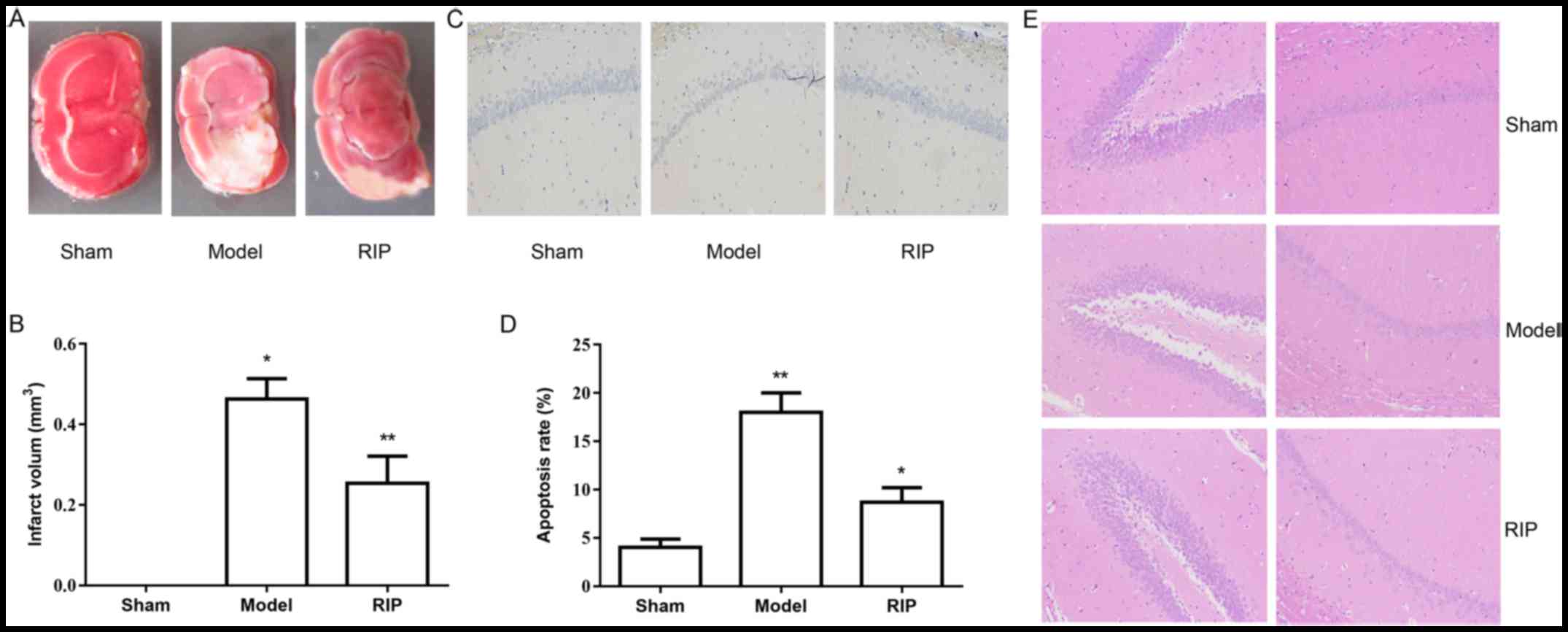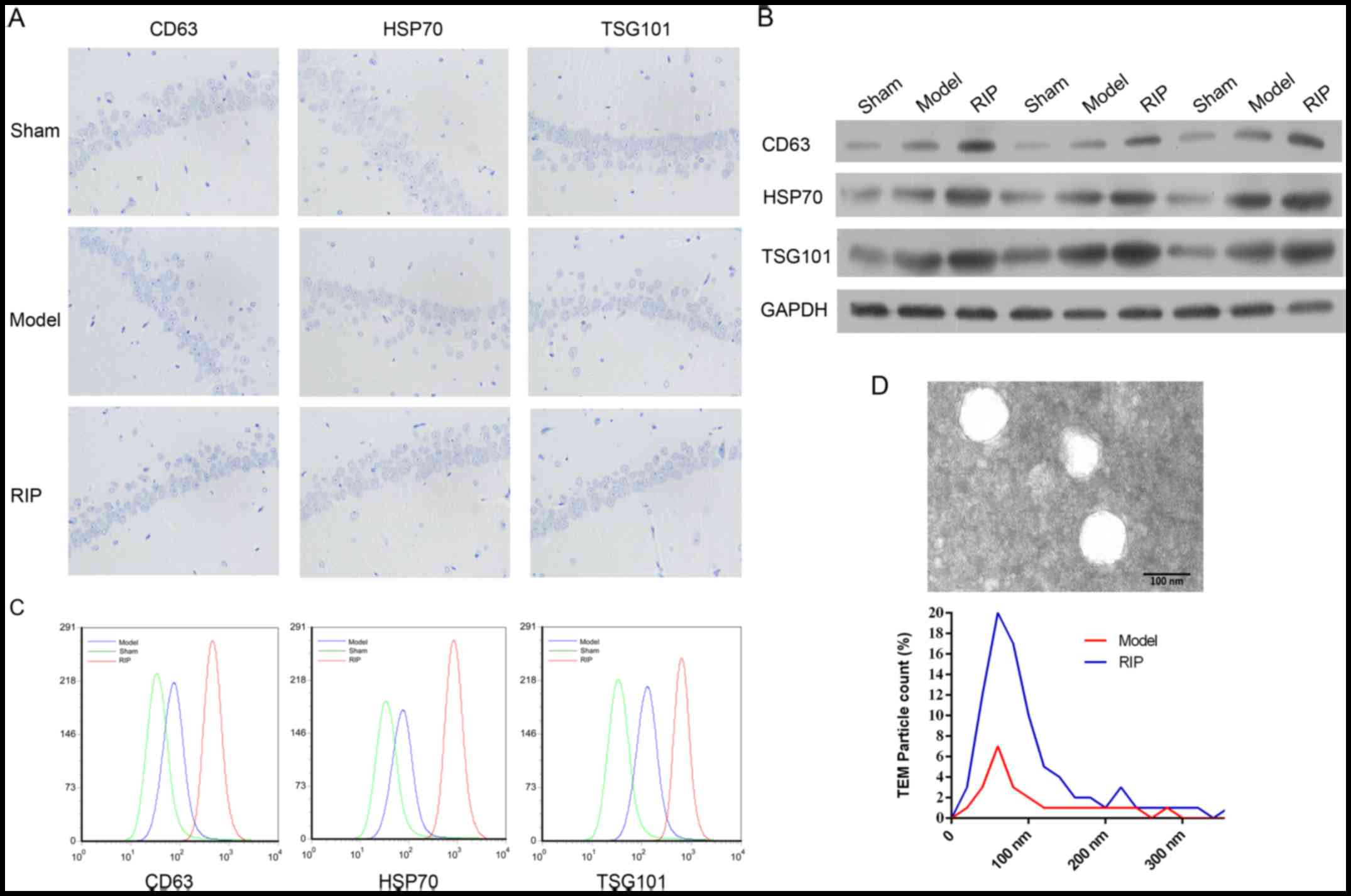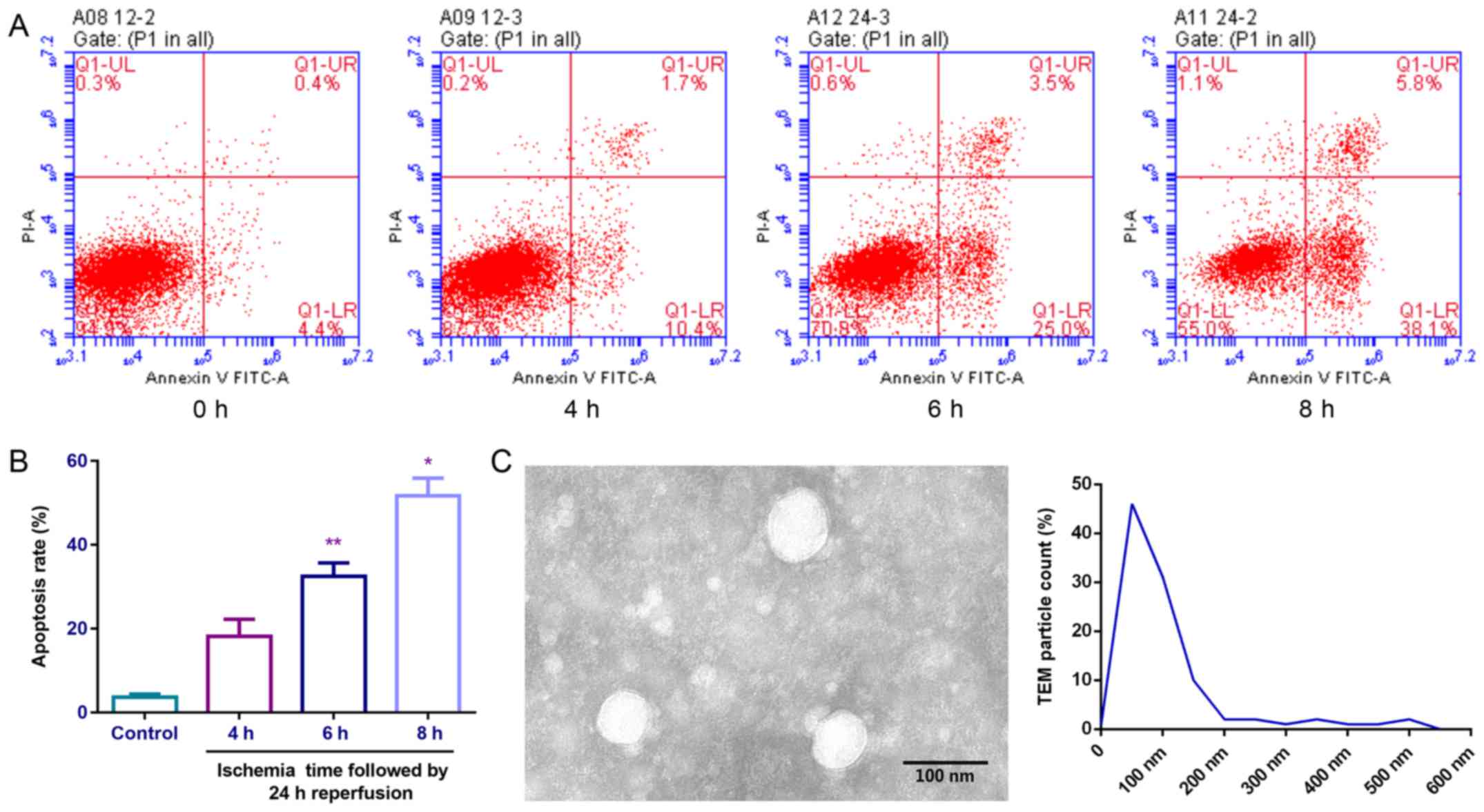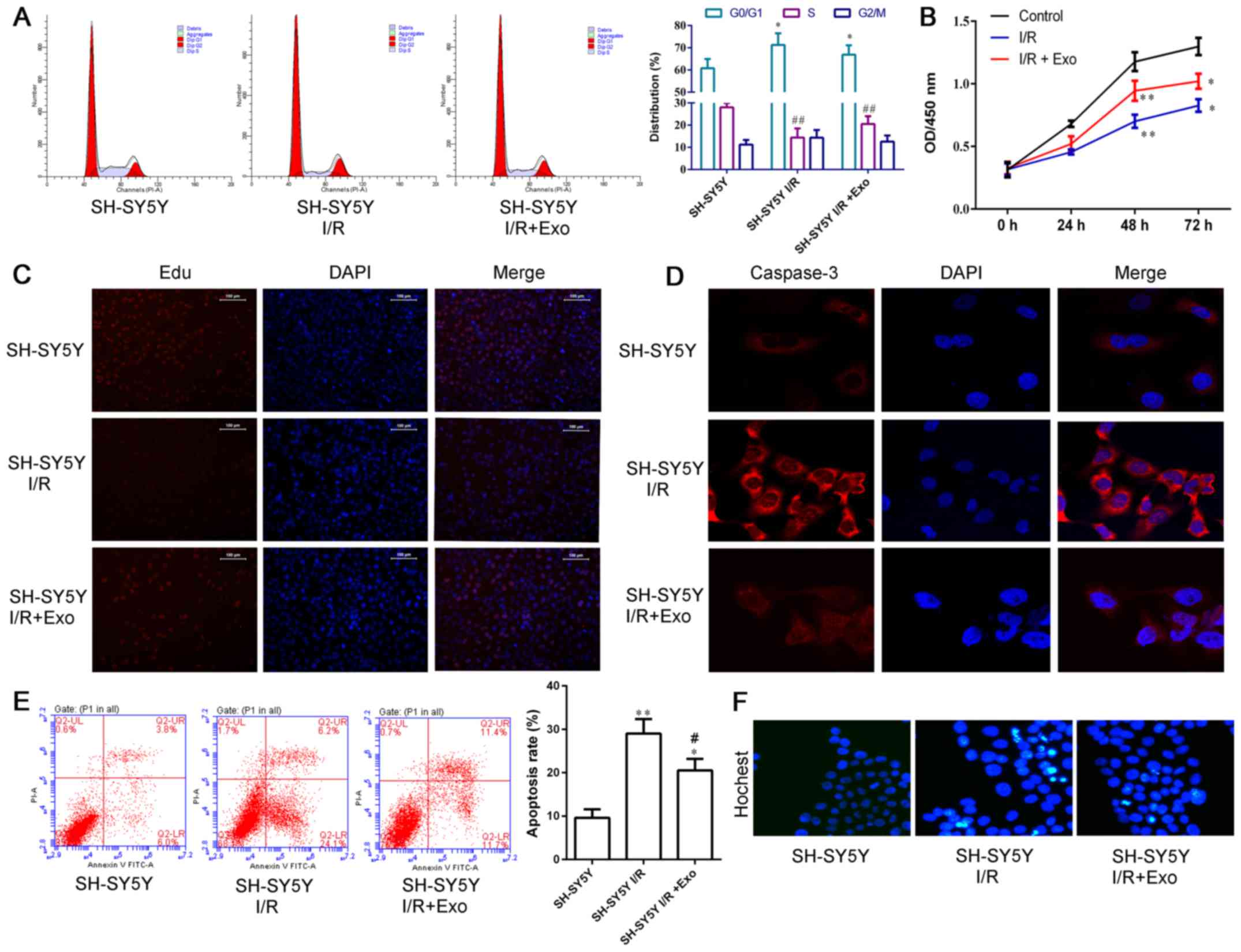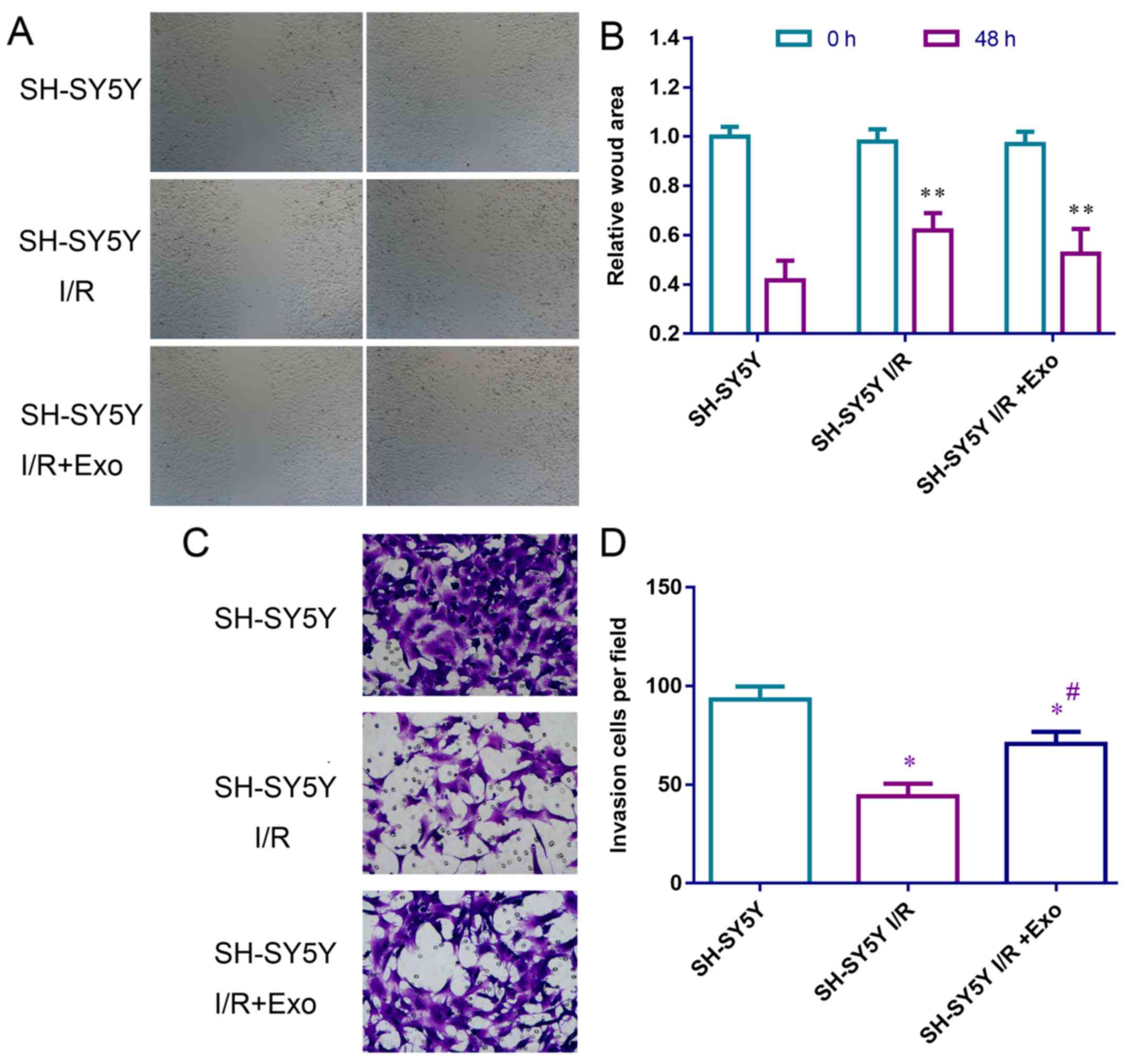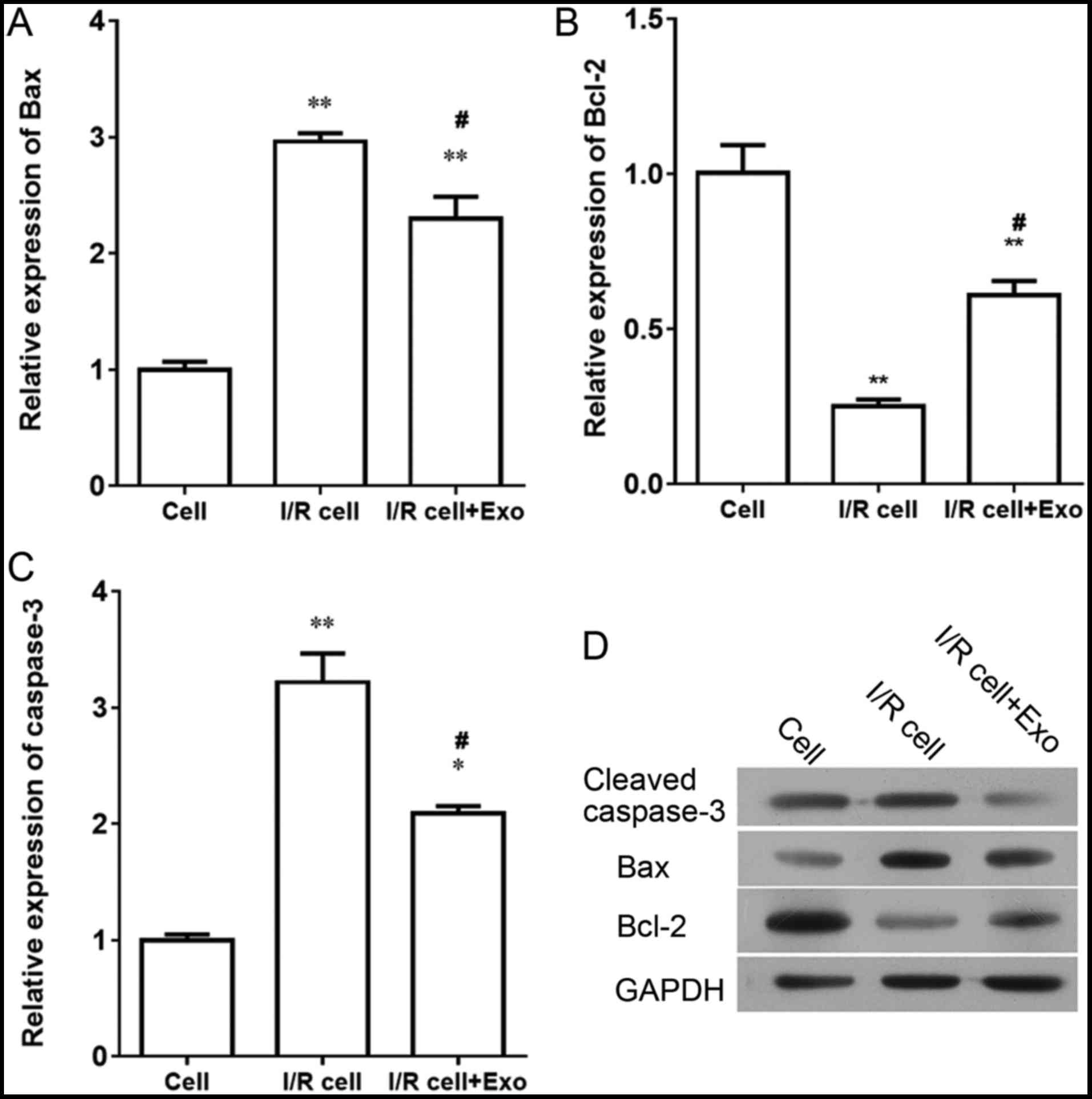|
1
|
Schreuder FH, Sato S, Klijn CJ and
Anderson CS: Medical management of intracerebral haemorrhage. J
Neurol Neurosurg Psychiatry. 88:76–84. 2017. View Article : Google Scholar
|
|
2
|
Guerram M, Zhang LY and Jiang ZZ:
G-protein coupled receptors as therapeutic targets for
neurodegenerative and cerebrovascular diseases. Neurochem Int.
101:1–14. 2016. View Article : Google Scholar : PubMed/NCBI
|
|
3
|
Guan WJ, Zheng XY, Chung KF and Zhong NS:
Impact of air pollution on the burden of chronic respiratory
diseases in China: Time for urgent action. Lancet. 388:1939–1951.
2016. View Article : Google Scholar : PubMed/NCBI
|
|
4
|
Yang Y, Shi YZ, Zhang N, Wang S, Ungvari
GS, Ng CH, Wang YL, Zhao XQ, Wang YJ, Wang CX, et al: The
disability rate of 5-year post-stroke and its correlation factors:
A national survey in China. PLoS One. 11:e01653412016. View Article : Google Scholar : PubMed/NCBI
|
|
5
|
Zeng Y, Liu JX, Yan ZP, Yao XH and Liu XH:
Potential microRNA biomarkers for acute ischemic stroke. Int J Mol
Med. 36:1639–1647. 2015. View Article : Google Scholar : PubMed/NCBI
|
|
6
|
Akpan N and Troy CM: Caspase inhibitors:
Prospective therapies for stroke. Neuroscientist. 19:129–136. 2013.
View Article : Google Scholar
|
|
7
|
van Ierssel SH, Conraads VM, Van
Craenenbroeck EM, Liu Y, Maas AI, Parizel PM, Hoymans VY, Vrints CJ
and Jorens PG: Endothelial dysfunction in acute brain injury and
the development of cerebral ischemia. J Neurosci Res. 93:866–872.
2015. View Article : Google Scholar : PubMed/NCBI
|
|
8
|
Lavi S, Abu-Romeh N, Wall S, Alemayehu M
and Lavi R: Long-term outcome following remote ischemic
postconditioning during percutaneous coronary interventions-the
RIP-PCI trial long-term follow-up. Clin Cardiol. 40:268–274. 2017.
View Article : Google Scholar : PubMed/NCBI
|
|
9
|
Fan YY, Hu WW, Nan F and Chen Z:
Postconditioning-induced neuroprotection, mechanisms and
applications in cerebral ischemia. Neurochem Int. 107:43–56. 2017.
View Article : Google Scholar : PubMed/NCBI
|
|
10
|
Andreadou I, Iliodromitis EK, Lazou A,
Görbe A, Giricz Z, Schulz R and Ferdinandy P: Effect of
hypercholesterolaemia on myocardial function, ischaemia-reperfusion
injury and cardioprotection by preconditioning, postconditioning
and remote conditioning. Br J Pharmacol. 174:1555–1569. 2017.
View Article : Google Scholar : PubMed/NCBI
|
|
11
|
Vyas N and Dhawan J: Exosomes: Mobile
platforms for targeted and synergistic signaling across cell
boundaries. Cell Mol Life Sci. 74:1567–1576. 2017. View Article : Google Scholar
|
|
12
|
Holzner S, Senfter D, Stadler S,
Staribacher A, Nguyen CH, Gaggl A, Geleff S, Huttary N, Krieger S,
Jäger W, et al: Colorectal cancer cell-derived microRNA200
modulates the resistance of adjacent blood endothelial barriers in
vitro. Oncol Rep. 36:3065–3071. 2016. View Article : Google Scholar : PubMed/NCBI
|
|
13
|
Castelli G, Parolini I, Cerio AM, D'Angiò
A, Pasquini L, Carollo M, Sargiacomo M, Testa U and Pelosi E:
Conditioned medium from human umbilical vein endothelial cells
markedly improves the proliferation and differentiation of
circulating endothelial progenitors. Blood Cells Mol Dis. 61:58–65.
2016. View Article : Google Scholar : PubMed/NCBI
|
|
14
|
Wei JJ, Chen YF, Xue CL, Ma BT, Shen YM,
Guan J, Bao XJ, Wu H, Han Q, Wang RZ, et al: Protection of nerve
injury with exosome extracted from mesenchymal stem cell. Zhongguo
Yi Xue Ke Xue Yuan Xue Bao. 38:33–36. 2016.PubMed/NCBI
|
|
15
|
Lozito TP and Tuan RS: Endothelial and
cancer cells interact with mesenchymal stem cells via both
microparticles and secreted factors. J Cell Mol Med. 18:2372–2384.
2014. View Article : Google Scholar : PubMed/NCBI
|
|
16
|
Hofer HR and Tuan RS: Secreted trophic
factors of mesenchymal stem cells support neurovascular and
musculoskeletal therapies. Stem Cell Res Ther. 7:1312016.
View Article : Google Scholar : PubMed/NCBI
|
|
17
|
Teixeira FG, Panchalingam KM, Anjo SI,
Manadas B, Pereira R, Sousa N, Salgado AJ and Behie LA: Do
hypoxia/normoxia culturing conditions change the neuroregulatory
profile of Wharton Jelly mesenchymal stem cell secretome? Stem Cell
Res Ther. 6:1332015. View Article : Google Scholar : PubMed/NCBI
|
|
18
|
Schey KL, Luther JM and Rose KL:
Proteomics characterization of exosome cargo. Methods. 87:75–82.
2015. View Article : Google Scholar : PubMed/NCBI
|
|
19
|
Chen X, Liu Y, Zhu J, Lei S, Dong Y, Li L,
Jiang B, Tan L, Wu J, Yu S, et al: GSK-3β downregulates Nrf2 in
cultured cortical neurons and in a rat model of cerebral
ischemia-reperfusion. Sci Rep. 6:201962016. View Article : Google Scholar
|
|
20
|
Shu S, Li CM, You YL, Qian XL, Zhou S and
Ling CQ: Electroacupuncture ameliorates cerebral
ischemia-Reperfusion injury by regulation of autophagy and
apoptosis. Evid Based Complement Alternat Med. 2016:72974252016.
View Article : Google Scholar : PubMed/NCBI
|
|
21
|
Zeng Y and Liu J: Role of glypican-1 in
endothelial NOS activation under various steady shear stress
magnitudes. Exp Cell Res. 348:184–189. 2016. View Article : Google Scholar : PubMed/NCBI
|
|
22
|
Marutani E, Yamada M, Ida T, Tokuda K,
Ikeda K, Kai S, Shirozu K, Hayashida K, Kosugi S, Hanaoka K, et al:
Thiosulfate mediates cytoprotective effects of hydrogen sulfide
against neuronal ischemia. J Am Heart Assoc. 4:42015.
|
|
23
|
Yan Z, Liu J, Xie L, Liu X and Zeng Y:
Role of heparan sulfate in mediating CXCL8-induced endothelial cell
migration. PeerJ. 4:e16692016. View Article : Google Scholar : PubMed/NCBI
|
|
24
|
Zeng Y, Sun HR, Yu C, Lai Y, Liu XJ, Wu J,
Chen HQ and Liu XH: CXCR1 and CXCR2 are novel mechano-sensors
mediating laminar shear stress-induced endothelial cell migration.
Cytokine. 53:42–51. 2011. View Article : Google Scholar
|
|
25
|
Zeng Y, Yao X, Chen L, Yan Z, Liu J, Zhang
Y, Feng T, Wu J and Liu X: Sphingosine-1-phosphate induced
epithelial-mesenchymal transition of hepatocellular carcinoma via
an MMP-7/syndecan-1/TGF-β autocrine loop. Oncotarget.
7:63324–63337. 2016. View Article : Google Scholar : PubMed/NCBI
|
|
26
|
Gnosa S, Capodanno A, Murthy RV, Jensen LD
and Sun XF: AEG-1 knockdown in colon cancer cell lines inhibits
radiation-enhanced migration and invasion in vitro and in a novel
in vivo zebrafish model. Oncotarget. 7:81634–81644. 2016.PubMed/NCBI
|
|
27
|
Lapi D and Colantuoni A: Remodeling of
cerebral microcirculation after ischemia-reperfusion. J Vasc Res.
52:22–31. 2015. View Article : Google Scholar : PubMed/NCBI
|
|
28
|
Yu Q, Huang J, Hu J and Zhu H: Advance in
spinal cord ischemia reperfusion injury: Blood-spinal cord barrier
and remote ischemic preconditioning. Life Sci. 154:34–38. 2016.
View Article : Google Scholar : PubMed/NCBI
|
|
29
|
Randhawa PK and Jaggi AS: Unraveling the
role of adenosine in remote ischemic preconditioning-induced
cardioprotection. Life Sci. 155:140–146. 2016. View Article : Google Scholar : PubMed/NCBI
|
|
30
|
Heusch G and Rassaf T: Time to give up on
cardioprotection? A critical appraisal of clinical studies on
ischemic pre-, post-, and remote conditioning. Circ Res.
119:676–695. 2016. View Article : Google Scholar : PubMed/NCBI
|
|
31
|
Hoda MN, Bhatia K, Hafez SS, Johnson MH,
Siddiqui S, Ergul A, Zaidi SK, Fagan SC and Hess DC: Remote
ischemic perconditioning is effective after embolic stroke in
ovariectomized female mice. Transl Stroke Res. 5:484–490. 2014.
View Article : Google Scholar : PubMed/NCBI
|
|
32
|
Limani P, Linecker M, Oberkofler CE,
Barmettler G, Kaech A, Graf R, Humar B and Clavien PA: Remote
ischemic preconditioning: A novel strategy in rescuing older livers
from ischemia-reperfusion injury in a rodent model. Ann Surg.
264:797–803. 2016. View Article : Google Scholar : PubMed/NCBI
|
|
33
|
Kadota T, Fujita Y, Yoshioka Y, Araya J,
Kuwano K and Ochiya T: Extracellular vesicles in chronic
obstructive pulmonary disease. Int J Mol Sci. 17:172016. View Article : Google Scholar
|
|
34
|
Huang-Doran I, Zhang CY and Vidal-Puig A:
Extracellular vesicles: Novel mediators of cell communication in
metabolic disease. Trends Endocrinol Metab. 28:3–18. 2017.
View Article : Google Scholar
|
|
35
|
Nakajima A, Tsuji M, Inagaki M, Tamura Y,
Kato M, Niiya A, Usui Y and Oguchi K: Neuroprotective effects of
propofol on ER stress-mediated apoptosis in neuroblastoma SH-SY5Y
cells. Eur J Pharmacol. 725:47–54. 2014. View Article : Google Scholar : PubMed/NCBI
|
|
36
|
Lu J, Li YH, Zhan X, Li G, Chen Z and Chen
X: The protective effect of qiancao naomaitong mixture on neuronal
damage and cerebral ischemia/reperfusion injury. Pharm Biol.
54:2304–2311. 2016. View Article : Google Scholar : PubMed/NCBI
|















